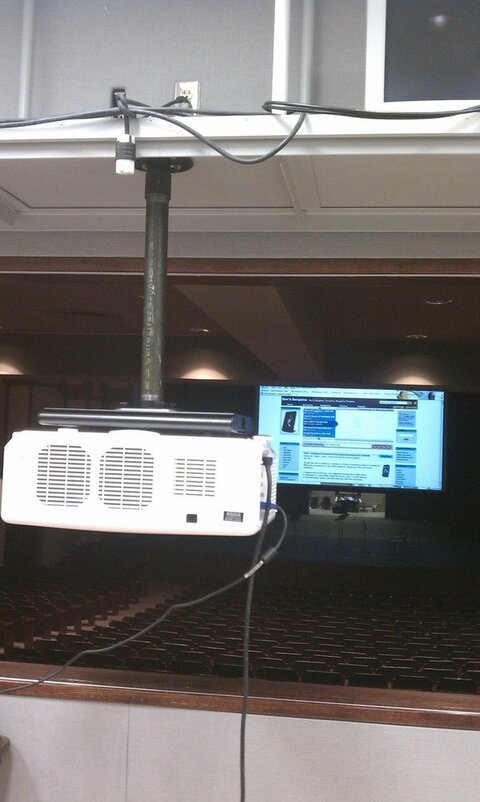h weeks!
I am in a theater of 435 seats. It's an about 60 feet deep
house. There is trouble controlling light during the day due to windows. Also, it is not uncommon to need
stage lighting and projection at the same time.
I have a
projector position that is 25 feet from the
screen, and another position that is 65 feet from the
screen. I would love to use the 65
foot position.
This is a school. So we will use this for lectures, multi-media as part of variety shows. For example we honor MLK day with song, dance, video and PP slides. All the media gets switched through the main
projector.
Additionally I have used many cheap lecture projectors for art. Vivitek 2600
lumen projectors - cheap from bh. These would not carry a strong enough signal for a big
screen. (I use an
array of four projectors to fill about 30 feet wide by 15 feet tall scenic field.) I use those for art, scenic and dance "Scene Machines."
For the movie
screen -- I plan on increasing our
screen size from 12 feet to 20 feet. The
proscenium is 36 feet.
Why 6k lumens? Well, that's where the money runs out on this one project. Simply put.
I want to push the most
image/light with the money I have. Our overall foot-candles are rather high. This
image needs to stand up as well as it can.



